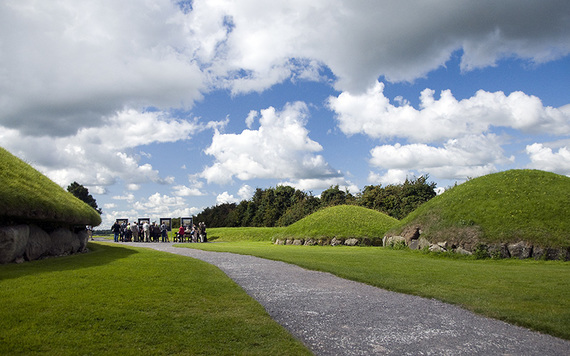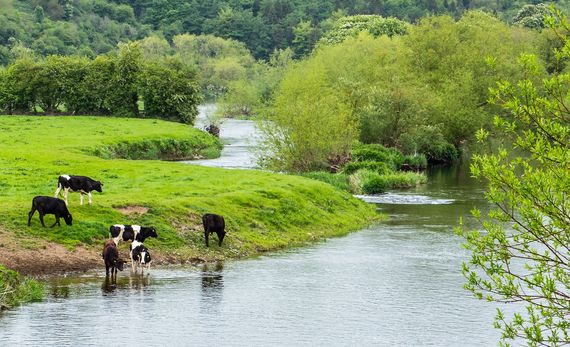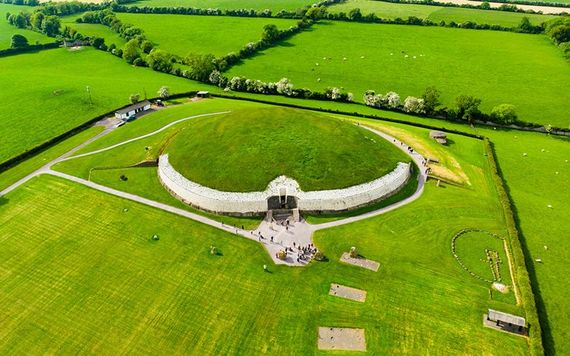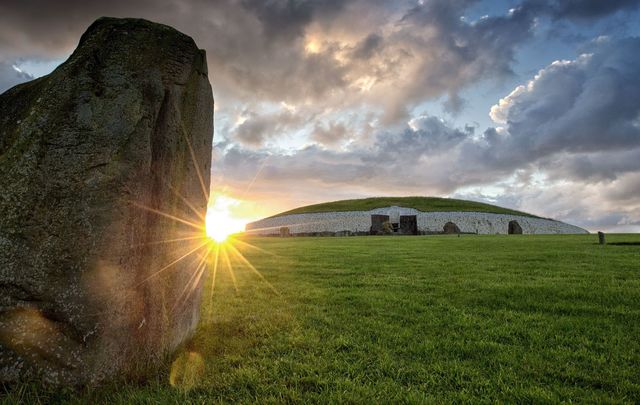New archaeological study of the River Boyne discovered 100 items of interest including possible longboats and boulders, meant for the 5,200-year-old monuments of Newgrange and Knowth.
Archaeologists have identified masses in the bed of the River Boyne that could be Neolithic log boats and boulders intended to be used in the construction of the 5,200-year-old tombs of Newgrange and Knowth, in County Meath.
The study focused on the River Boyne which cuts through the Brú na Bóinne World Heritage Site, in County Meath. Despite the fact that the River was a key thoroughfare and trade route over the millennia, the led researcher told the Irish Times, “our understanding of the river was identified in the 2009 Brú na Bóinne Research Framework as a major knowledge gap”.
Read more: The Boyne Valley - travel through Ireland's ancient mysteries
The area of Brú na Bóinne is one of the world’s most important prehistoric landscapes. It is dominated by the three well-known large passage tombs, Knowth, Newgrange and Dowth, built some 5,000 years ago in the Neolithic or Late Stone Age.

Tombs at Knowth, in the Boyne Valley.
The results of the recent study have not disappointed and come just four months after the announcement of the discovery of 40 previously unknown monuments and archaeological finds close to Newgrange.
The new research has examined the structure of the River Boyne over a 10km stretch. In doing so they've identified 100 items of interest.
Lead research Dr Stephen Davis, of the UCD School of Archaeology, said: “These items may or may not be archaeological, but we can say for certainty that they don’t belong there, they are things that are out of the ordinary and would benefit from further analysis.”
Read more: Secrets of Ireland's ancient passage tomb Knowth published free online
Ten of these items appear to be “log boat type anomalies and there have been log boats, including one that dated from the Neolithic era, found in the Boyne before”.
There are also 16 items believes to be large boulders or rocks. Dr Davis said, “if we are thinking of somewhere where people were potentially moving large stones up and down to build monuments with them it is almost certain that some of these were lost in the Boyne on their way to being used in construction”.

The River Boyne, cutting through the heart of the Bru na Boinne.
While it is highly unlikely that these longboats could have transported large rocks, archaeologists think that rafts may have been used. To put the size of those boulders into context, the entrance stone at Newgrange, famously decorated with triskele-like features is estimated to weigh 5 tonnes.
The survey also found weirs, which are accumulations of debris that could have archaeological importance. They also discovered 31 very modern tyres.
This survey of the River Boyne, reportedly the first of its kind, was carried out by a group of researchers from University College Dublin's School of Archaeology and University of Ulster's School of Geography and Environmental Science. The study was funded by the Royal Irish Academy.
Read more: Major new ancient discovery as important as Stonehenge made thanks to Irish heatwave
Dr Davis explained "The project had three main aims: to undertake new mapping of the river channel and to potentially identify new archaeological features, to explore the landscape of the river at Brú na Bóinne using Geographic Information Systems (GIS) and to collate local folklore relating to the Boyne from the Schools’ Collection to better understand the Boyne in its local context.”
The team laser scanning to explore the relationship of the River Boyne to the monument location using data gathered over a number of seasons of large-scale survey and existing airborne surveys.

The ancient tomb of Newgrange from above.
“These analyses highlight the importance of visibility from the river for site placement, especially in regard to the Neolithic passage tombs and timber monuments,” Dr. Davis said.
“The Neolithic landscape is very much constructed around the river. For an observer from the river, the ridge on which Newgrange, Knowth and Dowth are located would have formed a northern barrier beyond which there was no visibility. To the south the steep slopes again block the observer’s views.”
The findings of this research will be part of a temporary exhibition, featuring key project results, to be housed in the newly redeveloped Office of Public Works Brú na Bóinne visitor center.
Have you ever visited Ireland's ancient tombs? Let us know in the comments section below.
Read more: Genealogists petition for early release of 1926 Irish census




Comments